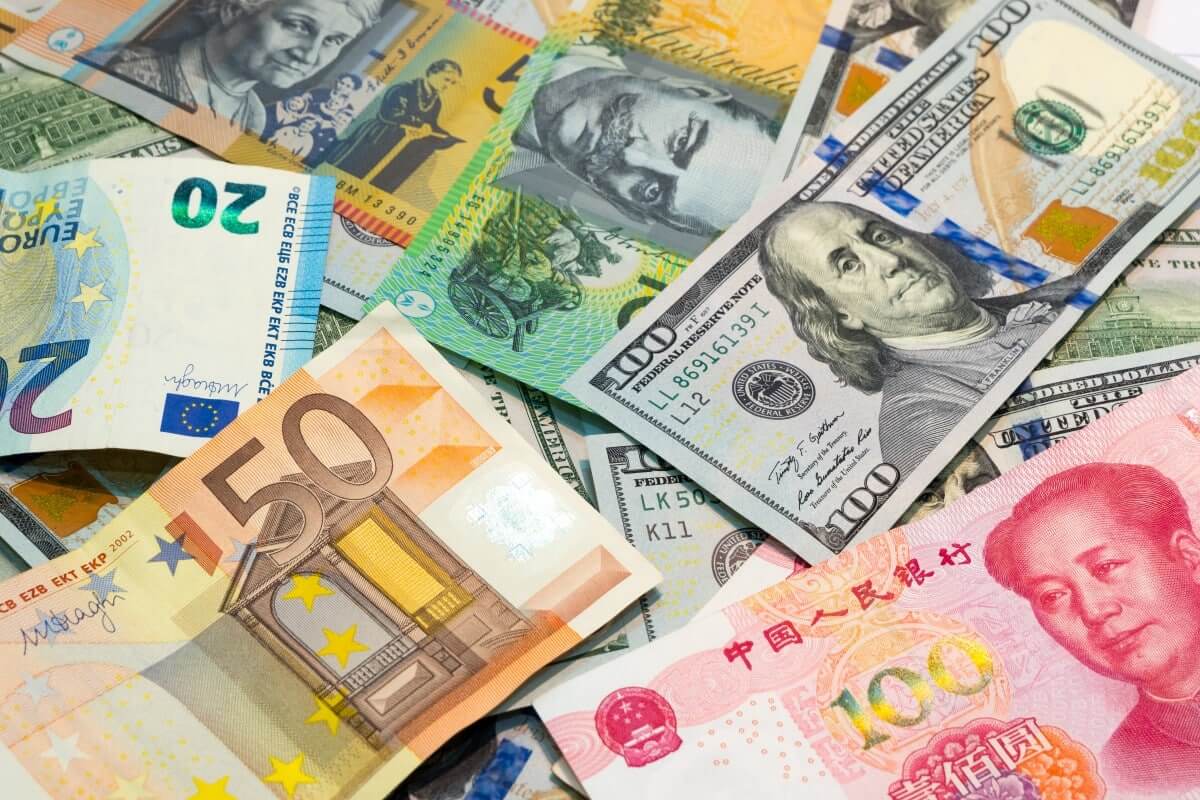Dollar plunged to an almost five-month low. What about Euro?

The U.S. dollar plunged to an almost five-month low. What about Euro?
The U.S. dollar hit almost a five-month low versus other major currencies on Friday. The dollar index tumbled by nearly 0.2% to 104.47. Earlier in the session, it dropped to its lowest level since June 29, exchanging hands at 104.36. Investors are waiting for U.S. labor market data. The greenback declined by more than 5% last month due to expectations that the Fed would slow its aggressive rate hikes in the coming months.
On Thursday, the core personal consumption expenditures (PCE) price index data was below analysts’ expectations. The U.S. Federal Reserve set its inflation target at 2% and needs the PCE price index data to ascertain the situation. According to Fed chair Jerome Powell, it’s time to slow the rate increase. He stated on Wednesday that, at this point, slowing down would enable the agency to balance the risks.
Meanwhile, Commerzbank analysts noted that Powell’s dovish speech wasn’t the only reason for the dollar’s weakness. Yesterday’s U.S. data also weighed on the currency. Traders are currently waiting for nonfarm payroll data for new hints about how the labor market fares after the interest rate increases.
ING FX strategist Francesco Pesole stated that Forex markets really believe the pivot story from the Fed officials. Thus, sentiment turned bearish on the greenback. According to the analyst, strong payroll numbers could support the currency.
Investors moved on riskier currencies, bolstered by the possibility of slower rate hikes from the Fed. However, that means the safe-haven dollar plummeted after four consecutive 75-basis-point (bps) increases that brought the greenback so much support this year.
How is the Chinese Yuan trading?
The yuan skyrocketed on Friday, adding 0.5% versus the dollar to 7.0235. The currency seemed set for its biggest weekly gain since China revalued its currency in 2005. Overall, the yuan jumped by 1.9% over this week. Market participants were optimistic as the country is preparing to exit from its zero-COVID policy.
Furthermore, the Japanese Yen also rallied. The greenback shaved off 0.9% at 134.09 yen. The USD/JPY pair had earlier dropped to its lowest level since August 16, exchanging hands at 133.62.
In Europe, the euro remained mostly unchanged at $1.0532 today, but the currency added 1.1% in the previous session. On Friday, European Central Bank President Christine Lagarde cautioned investors that some European governments’ fiscal policies might cause excess demand. She also added that monetary and fiscal policies need to work in synch to achieve sustainable and balanced economic growth.
The British Pound lowered by 0.1% on the day, trading at $1.2260 at last. On Thursday, the sterling soared by 1.7%, hitting a 5-month peak of $1.2311.
What about Emerging Market currencies?
Most Asian EM currencies surged forward against a tumbling greenback today. The Indonesian rupiah and the Philippine peso gained the most. The rupiah traded in the green for a third consecutive day in Indonesia. The currency added almost 1% over these days. It seemed set to experience its best week since November 2020. That is mostly due to inflation data released on Thursday. It indicated that inflation might be cooling in the country, even though it stays above the central bank’s target range (2% to 4%).
Meanwhile, the Philippine peso jumped by 0.9% in its fifth session of a rally. The peso plummeted by 8.5% this week. However, it soared after the central bank announced that it would hike interest rates in December.
The Philippine benchmark shaved off most this week across Asia despite Friday’s gains. Overall, it dropped by 3.6%, remaining on track for its worst week in the last nine.
The Malaysian ringgit also strengthened by 0.2% today. It rose by almost 2% this week. At the same time, stocks plunged by 0.7%, breaking a two-day winning streak. Investors are waiting for an update on the cabinet line-up later on Friday.
Other EM currencies also traded in the green on Friday. India’s rupee, Thailand’s baht, and the Singaporean dollar each climbed up by 0.1% or more. On the other hand, shares declined by 0.1% in Jakarta, experiencing their worst week since mid-October.
The central bank of Indonesia increased interest rates by a total of 175 basis points this year to hinder soaring inflation. The bank plans to moderate rate hikes even though it still needs to increase them by at least 25 bp (basis points).
The post Dollar plunged to an almost five-month low. What about Euro? appeared first on FinanceBrokerage.
0 Response to "Dollar plunged to an almost five-month low. What about Euro?"
Post a Comment